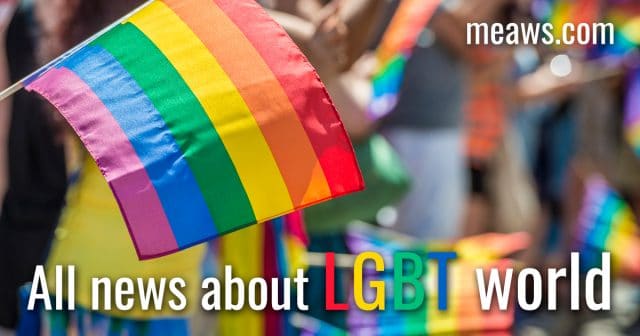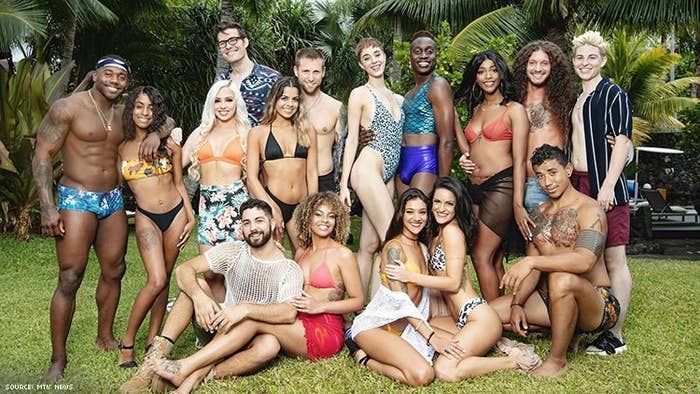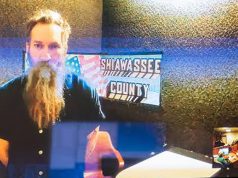

MTV
The season 8 cast.
Like all dating reality show franchises, MTV’s Are You the One? has a shtick. A bunch of young singles are thrown together in a house, set in the kind of tropical paradise required for finding true love on television. The twist: Using old-school matchmaking techniques and complex algorithms, dating experts have paired the housemates with their supposed “ideal” mates, but neither the cast nor the viewers know the matches.
The housemates themselves have to figure out the “true love” couplings by undertaking a bunch of elaborate activities. The cast enacts physical embodiments of the hell of dating, such as races where participants jump over obstacles labeled with problems like “fear of commitment.” Winners of these challenges are rewarded with one-on-one dates and the opportunity to vote on whom they think is a “true” pair. If they figure out all the correct pairings before the end of the season, the housemates will win a million dollars.
For the past seven seasons, the men have been paired with women, and women with men. But in the current, eighth, iteration of the show, which debuted June 26, MTV flipped the shtick by including only sexually fluid participants who are attracted to all genders, so that, in the parlance of promotional materials, anything goes!
Despite the somewhat sensationalizing premise and its potential land mines, the resulting show — four episodes in — is already one of the more provocative entries in reality dating TV, where queerness has previously been treated as the topic of a “special episode” add-on or as a scandalous plot twist. The concept of sexual fluidity itself is often deployed in reality TV as a strategy through which shows can hint at queerness for mainstream viewers — without actually exploring queer culture outside a straight gaze. Now Are You The One? is challenging the dating genre’s conventions, foregrounding experiences and conversations about love, desire, and relationships from a nonheteronormative perspective that, in today’s pop cultural landscape, are still rare.
Queerness on reality dating shows has mostly been treated superficially, like with the trope of the sudden reveal. Boy Meets Boy, which aired in 2003 on Bravo, involved a Bachelor-style butch gay guy finding love among 15 suitors. But the plot’s reductive pretense revolved around the fact that some of the suitors were secretly straight. The show’s driving question became whether the titular “boy” would be able to tell the straights from the gays. As the show’s gay producer and creator, Douglas Ross, admitted at the time, “If it were just a gay dating show, for sure we’d get a lot of gay viewers, probably not that many straight [viewers], [and] some looky-loos. But we felt by putting [the twist] in, we would get a much broader audience.”
MTV’s own 2007 offering, A Shot at Love With Tila Tequila, was the rare reality show featuring an Asian American star. But it hewed to a similar logic, in which 16 straight men and 16 lesbians competed for Tila’s affections, with the curveball being that the contestants were not aware of her bisexuality. (She chose the guy in the first season, and later claimed she was never bisexual and was simply “gay for pay.” Since then she also seemed to become a Nazi sympathizer.)
MTV
A scene from A Shot At Love with Tila Tequila.
More recently, Logo’s 2016 The Bachelor knockoff Finding Prince Charming was so in thrall to its straight counterpart — indicated by the casting of the bland, if well-built, Prince Charming — that it failed to establish its own identity. It was mostly notable for its lack of drama and bad cast. (Host Lance Bass possessed all the shiny, plastic charisma of a grocery store green apple.)
These shows were not explicitly focused on the actual challenges posed by dating as a queer, gender-nonconforming person in a straight world. Plus, the central objects of desire were hot in conventionally gendered ways, and the shows worked through enticing plot gambits that could bring in mainstream audiences.
Are You the One?’s promotion has played into the Tila Tequila strategy to some degree, teasing the question of which gender different participants will end up with. “I have no idea if I’m going to be attracted to a male or a female,” says blonde housemate Kari in one of the show’s commercials. “I’m attracted to both genders. I’m ambidextrous.” Sexual fluidity often gets reduced to this trope of “will this (conventionally hot) woman ultimately pick a man or a woman?” in a way that seems designed to turn on straight men — or at least, the trope is designed not to offend straight logics about desirability.
But the housemates in Are You the One? aren’t just fluid in terms of their sexual orientation, and the actual show doesn’t limit itself to that straight-gazey question of “which gender will they pick?” The castmates represent a much fuller range of the gendered spectrum, from femme and masc queer men to butch and femme queer women, to nonbinary and trans castmates. In bringing them all together, the show is creating a televisual space to stage the complexities of gender and desire that can come with queer dating and that are rarely seen on television — or in pop culture, period.
Like most reality shows, Are You the One? actually lives or dies through the strength of the casting and the resulting drama of the casts’ relationships. The eighth season is strong on both counts. As the housemates engage with each other, falling into and out of connections and figuring out their feelings for each other in search of the grand prize, they are remarkably open and self-aware about the difficulties — and pleasures — of breaking out of old dating patterns.
For instance, early on, Nour, described as an “aggressive possessive” (the castmates are all chyroned with their relationship style) tells the group about her difficulties coming out as queer in her Jordanian Muslim family and community. She quickly falls for Amber, described as “perpetually feeling second.” But when the time comes to pick her first choice for a dating challenge, she chooses Justin, a perfectly built masc guy who, save for the tats and bisexuality, might not be out of place on The Bachelor.
During a group therapy check-in, she admits that Amber should have been her first pick, and Justin gets upset about her “playing” him. But this drama gets unpacked in nuanced ways that transcend the usual drama for drama’s sake. “I’m so used to going after people like you; it’s hard for me to get out of that mindset,” she tells him. “I was playing it safe, and I fucked up and I’m sorry.”
The theme of unlearning the kinds of desire dictated by a heteronormative culture permeates the show. That element takes a funnier turn through Jonathan, a more femme guy, who also has a crush on Justin. To some degree, the housemates have to be serious about finding their “real” match — and in the show’s parlance, that means following your heart rather than your libido. Jonathan contorts himself to convince us — or himself? — that following your heart and your libido can, in fact, be the same thing, as indicated by his straight-faced explanation for pursuing hunky Justin: “That takes a lot of work to look like that, and anybody who puts in that amount of work would put it into a relationship too.” (Jonathan also provides unintentionally creepy comedic relief with comments like, “If Justin were to deliver me a package in the middle of the night, I’d hope it would be his heart beating in a box.”)
MTV
Jenna and Kai.
The show strikes a nice balance between a kind of pedagogy for clueless viewers — as the housemates explain their relationships to gendered identities — and being just another dating show. Kai, a self-described nonbinary transmasculine human who has already become something of a breakout star, points out that there’s no “trans dating for dummies” handbook. He explains in a confessional that as he has transitioned, his hormones leave him feeling like a horny teenage boy.
One of the fastest — and already most explosive — pairings taking shape early in the season is between Kai and Jenna, a cis, femme-presenting, self-described drama queen. (“There’s something about a roller-coaster relationship that gets me excited,” she tells us in a confessional. “I thrive in drama.”) She falls for Kai early on, and they enjoy an interlude in the self-explanatory “boom boom” room. But then horny Kai also hooks up with Remy (a “proudly promiscuous” bisexual).
In one group therapy moment, Jenna, Kai, and the other participants discuss monogamy and open relationships. “I think it’s a personal land mine,” Jenna offers. “It’s not a land mine for everybody,” counters Kai. The housemates all have different opinions, but the show leaves the question of whether open or closed relationships are good or bad up to the viewer, without really judging any one cast member for their opinion. (“I’m a closed book on this,” Jenna tells us, adding, in her usual hyperaware therapy-speak, “I have anxious attachment issues.”)
While most dating shows idealize existing ideas about love and desire, these castmates are openly grappling with cultural scripts — and creating new ones. We get a taste of the now-standard trope of masc-on-masc romance (and how it intersects with internalized anti-gay sentiment) in the coupling between Justin and Midwestern hottie Max, who have a very hot Brokeback-y encounter in a closet as Jonathan awkwardly walks in on them.
But the show also explores queer desire outside of that framework. Basit, a pansexual black castmate who goes by they/them, is purposely staying away from their usual dating patterns of pursuing hypermasculine men. Instead, they go out with Kylie, a cis black woman, and then set their eyes on long-haired Jonathan (who, in turn, is into Justin). Jonathan is initially uninterested in Basit in a romantic sense. But after the housemates stage a queer prom, where they all get to dress up — and Basit unveils Dionne Slay, their drag persona — Jonathan starts reconsidering his attraction. “I do connect with Basit on every single level, except sexual and romantic,” he explains. “I’ve never dated a feminine person before, except for 100% female. I need to train my mind into liking that.”
It’s unclear, four episodes in, if Basit’s feelings for Jonathan will eventually be reciprocated; Jonathan keeps waffling between what he’s been taught to like and what he might learn to see in a different way. But these open discussions are a timely reminder that what we are attracted to is in many ways learned or culturally dictated, and therefore might be worthy of interrogation. “The house is so open and so loving, it makes it harder because everyone’s connecting on some level,” says the adorably dorky castmate Danny. And so far, Are You the One? is the rare reality show that appeals to our utopian fantasies by asking us to think differently.
Importantly, though, race has not been an open topic of discussion in the way that gender and sexuality have, despite the show including many castmates of color. At one point, after Jonathan explains he’s not romantically interested in him, Basit breaks down and says he’s tired of rejection and just wants to be desired in his entirety, which he’s never experienced. Arguably, his experience is a reminder that desire is both raced and gendered, and when men of color are prized for hypermasculinity, refusing such ideals can come at a steep price.
Still, in presenting so many different types of people as desirable on their terms, the show’s perspective represents a challenge — not just to the way gender-conforming heterosexuality is normalized in most cultural representations, but also to some of the rampant racial and gendered prejudices of gay hook-up app culture.
MTV
Basit and Danny.
Are You the One? is part of a newer wave of reality dating shows that almost routinely contain some queer content. Love Connection, hosted by Andy Cohen, always includes some gay and lesbian pairings every season. Netflix’s recent foray into the reality TV dating world, Dating Around, also included two episodes with queer protagonists and suitors, which were arguably some of the most interesting of the show.
Those two episodes foregrounded issues that are rarely depicted in dating television. In one date between two men, one of them hints at being a top, a potentially awkward gay dating land mine that many will relate to. In the other, one queer woman rejects one of her suitors for being “too femme,” because she prefers more androgynous women. The idea of a woman being “too femme” (or, for that matter, a man being “too masculine”) would be literally unintelligible in the Barbie and Ken world of The Bachelor franchise.
Despite not being the kinds of issues explored in most dating shows, these are common things that routinely come up for queer people, especially those who are gender nonconforming. Still, the one-off, episodic structure of Love Connection and Dating Around doesn’t allow them to explore the full nuances of queer relationships through a season-long treatment, as Are You the One? promises to.
“I’m so happy that this happened,” says castmate Jonathan, as he slips into makeup and a dress for the queer prom. He revels in the excitement of discovering new aspects of himself. “It’s kind of groundbreaking for people who have never done this before, like, I’ve never done this before.” He might have been speaking about the experience of watching — or starring in — the show itself.







